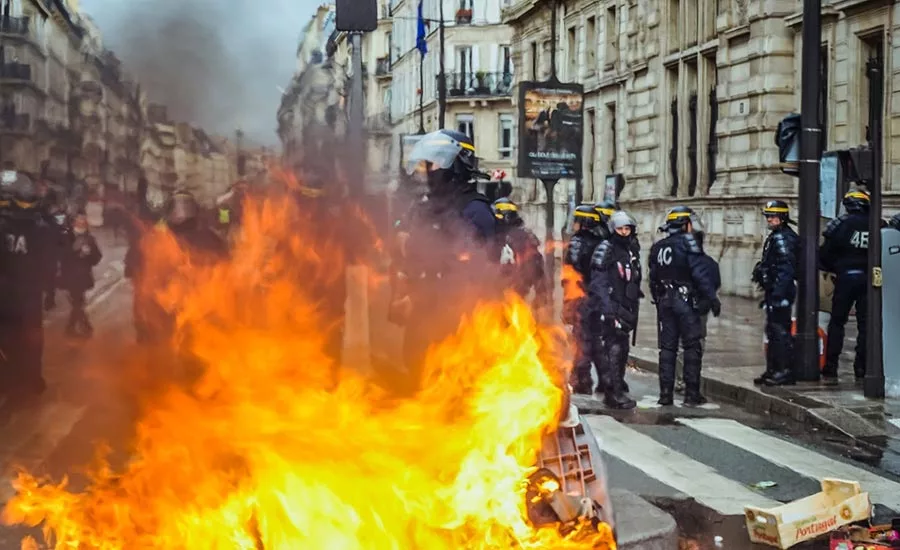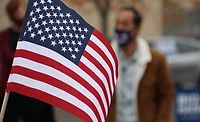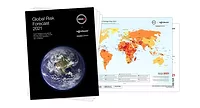Terrorism and security threat trends in 2021

COVID-19 has accelerated a variety of global trends. Some of these are perhaps ultimately good, for example moves towards more investment in AI and automation, or a growing focus on taking this opportunity to making lasting changes to benefit the environment. Many others are, however, quite concerning. Continued threats to the global order, the likelihood of states testing the resolve of the new U.S. administration, and increasingly polarized populations are all factors that will dominate 2021.
Terrorism, similarly, is a global trend that is experiencing something of a resurgence due to the consequences of the COVID-19 crisis. From 2016, our ASTRA model showed that this was one of the few risk areas that had experienced a fall globally. This was mainly driven by the reduction of Islamic State in Syria and Iraq, the limitations on the previously high-threat al-Qaeda in the Arabian Peninsula, and a fall in activity across North Africa. Although the Sahel, West Africa, Somalia and Afghanistan continued to see jihadist activity, and there were also numerous attention-grabbing attacks in countries such as the U.K., U.S., and across Europe, these did not offset the global decline in the threat posed by the main jihadist organizations.
2021 will, however, see a revival in risk levels. This upturn will be catalyzed by the consequences of COVID-19, with the situation offering substantial opportunities to would-be threat actors. Drivers include increased economic hardship in many countries most impacted by terrorism; international distraction mitigating effective responses to threats; the ability to exploit and benefit from inter-state rivalries, for example Turkey employing former Syrian fighters in Nagorno-Karabakh; and over-stretch of domestic security services. Lockdowns have also given people time to research and radicalize, with societal divisions and stress hardening mindsets.
For Western corporations, particularly in Europe, the controversy between France and the Muslim world will be the immediate concern going into 2021. As shown in the last few months, so-called lone wolves will continue to launch attacks in public spaces in Western cities, although media corporations and social media platforms will also be vulnerable if perceived to be promoting anti-Muslim sentiment. Meanwhile, more established terrorism risks will continue to impact the energy and mining sectors in Africa and the Middle East, with the former overtaking the latter and even South Asia as a center for activity. In particular, an intensifying insurgency in Mozambique is increasingly threatening its gas industry, while in Iraq, Shia militia violence and anti-government protesters will threaten to disrupt the country’s oil sector. Disruption is particularly likely during the first half of the year as Iran seeks to test U.S. resolve. The 20th anniversary of the 9/11 attacks is also a possible trigger, and this will certainly focus public attention on jihadism around that time.
While jihadists will remain the most obvious threat, since 2015 the growth of the right wing has been much more concerning, particularly in the U.S./Five Eyes and European environment. Issues such as migration, global trade, global security, and support for international organizations have driven visible polarization in the political landscape and any such shift always feeds a fringe extremist element. Unlike jihadism, the far right is harder to identify, especially in liberal democracies. Far right threat actors also tend to be both more aligned with the security services that are tasked to counter them, and more decentralized, making networks far harder to counter – as shown by the fact that 60% of successful terrorist attacks are carried out by unaffiliated individuals, whether they be jihadist or right wing.
This threat will remain most evident in Europe, with Germany Greece, Italy, and the U.K. arguably being the countries most likely to see incidents. While solo actors have the highest chance of landing a successful violent attack, a number of complex plots have been only narrowly prevented in the last few years, some even being linked to members of the respective country’s armed forces. Migration is a significant catalyst, and increased protectionism is likely in 2021 as a consequence of the economic impacts of COVID-19. In addition to the countries previously mentioned, Hungary, Austria, and Sweden have also seen mass migration and so it is not surprising that these countries will continue have an active far right threat.
Lockdown has to some extent mitigated incidents, but far right groups have been particularly active in the anti-stringency protests that have taken place. Identification with this cause and, increasingly, the anti-vaccination movement is being fueled by deliberate disinformation campaigns on social media, offering increasingly fertile ground for recruitment. Larger scale economic issues, international tensions, government policy failures, and societal tensions coupled with emerging triggers such as a new wave of threatened migration via Turkey will further fuel this trend. Mental health is also a driver particularly for “lone wolf” actors, and the risk of people being influenced by social media echo chambers is disturbingly high.
The U.S. meanwhile has experienced a similar uptick in far right activities, which drew particular attention ahead of the elections in November, and this also risks catalyzing the left wing as well as part of a violent cycle. Despite few successful attacks, the general level of activity has already particularly impacted the tech sector, where de-platforming of those involved in spreading far right views has become an imperative. This reflects how corporations increasingly feel unable to take a neutral position on touchstone issues, for example racial justice and election outcomes, with not making a statement being seen - in itself - as a statement. This means that when executives are motivated speak out, either in a personal capacity or for their company, a negative reaction will seriously risk attracting isolated acts of violence.
The far right will likely become much more technically agile as a result of the measures forced by the COVID-19 crisis. Messaging has also changed, away from more obvious neo-Nazism towards a more sophisticated national identity message, particularly driven by an influx of younger recruits. However, at present the one saving grace is that the various disparate elements have failed to find a common cause, particularly in Europe, although the “stop the steal” issue in the US risks providing a more coherent narrative there. The coalescence of messaging is a major indicator we are watching for in the coming months, as economic impacts of COVID-19 start to bite much more fiercely.
Simpler tactics remain most likely to be successful. Run-over attacks using vehicles have been proven to be highly effective. Away from mass killings, sabotage of telecoms infrastructure has been driven by disinformation linking 5G to the virus, but have proven to be effective and hard to counter. Assassination of political and business leaders is also a constant threat, or figures linked to controversial issues in relation to Islam (as shown in France). The overstretch of the security services amidst financial constraints and a multitude of demands is making countering the threat a major issue that will only accelerate in the coming year.
The makings of a perfect storm are therefore present in both Europe and the U.S., given likely trends. Although the direct impacts are often minimal, the nature of terrorism is such that it has a disproportionate effect on business, and particular sectors face a growing threat. Financial services and technology firms also face an indirect challenge from increasing regulation and demands by lawmakers that they “do more” to help mitigate the use of platforms by increasingly sophisticated threat actors.
This article originally ran in Security, a twice-monthly security-focused eNewsletter for security end users, brought to you by Security Magazine. Subscribe here.
Looking for a reprint of this article?
From high-res PDFs to custom plaques, order your copy today!








